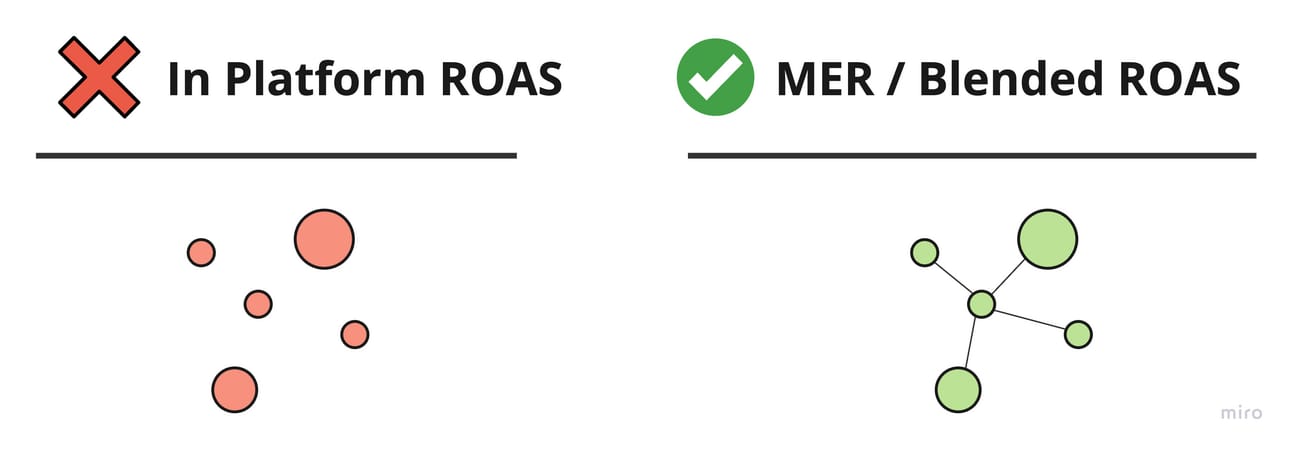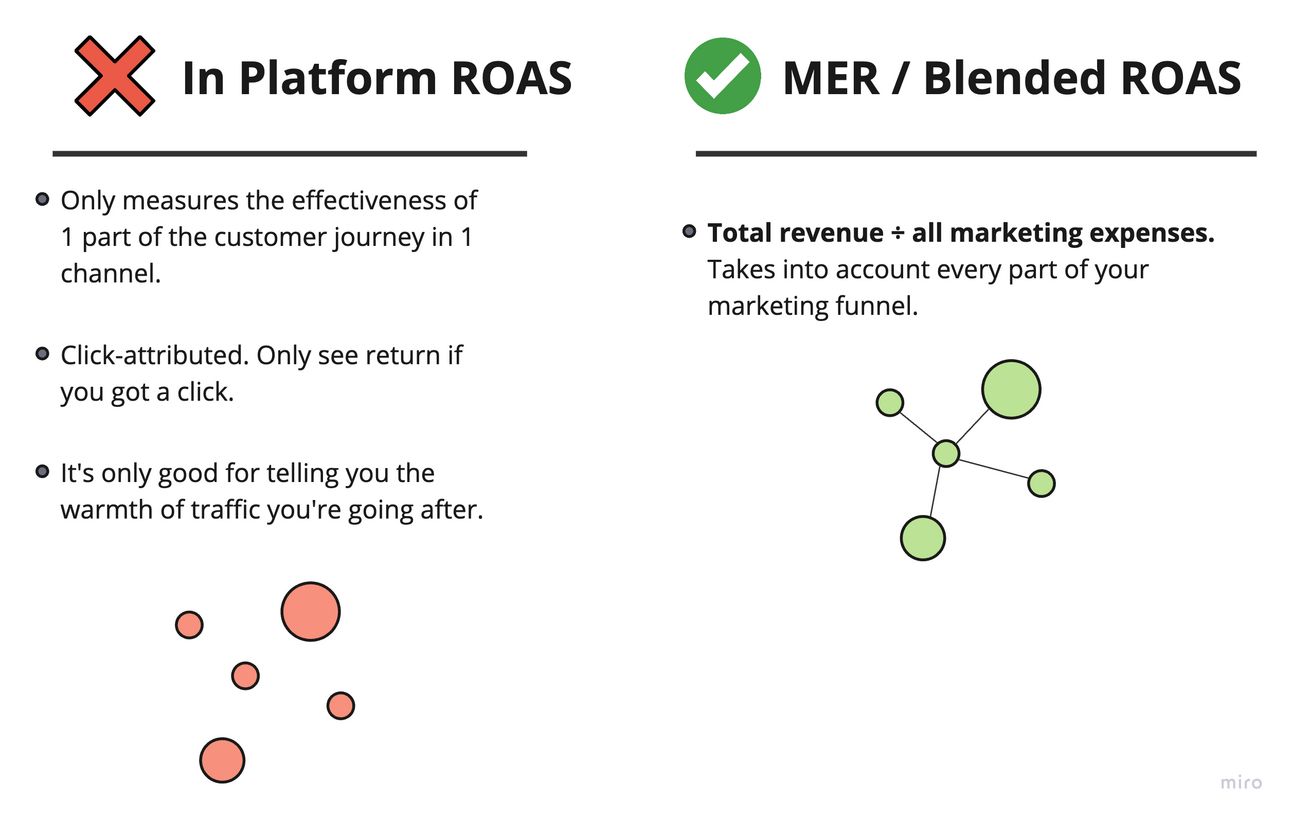- The PPC Newsletter
- Posts
- You're using ROAS wrong...
You're using ROAS wrong...
And it's hurting your profit.

Hey, it’s Myles.
That’s quite a strong claim I’m making in the title of this email…
And if you keep up with news in the PPC space, then you’ll know that a lot of people are talking about ROAS.
So before I explain why measuring ROAS is hurting your profit, let me give a bit more context.
The ROAS I’m referring to here is the number that your Google Ads dashboard is telling you.
ROAS = Conversion Value ÷ Google Ad Spend.
ROAS is the main metric that I fear most people use to make decisions about the success of their campaigns.
And if you are guilty of basing your campaign’s success solely off of ROAS values in Google…
Then you’re using ROAS wrong.
But it’s not your fault.
The ROAS value can be easily manipulated inside of Google.
And it’s why most agencies / freelancers will tell you it matters the most.
Plus, no one talks about the other metrics that matter because they are not as ‘sexy’ and so YouTube views go down… 😢
Now you know this, let me tell you what ROAS really tells you, and what metric you should be tracking to determine your ads success.
What ROAS Tells You
ROAS is made out as the metric which tells you if you’re campaigns are successful or not.
That’s not true.
Just because you get a 20x ROAS on your brand campaign does not make it “more successful” than you’re shopping campaigns.
That’s because both campaigns serve different purposes, and target different audiences of people at different stages of the customer journey.
The same goes for your different traffic channels (E.g. Meta vs. Google)
The reason why you mustn't compare ROAS between different channels to determine business health is because it is usually a click-attributed metric.
Meaning did they click and can I see the return.
Very little clicks come from YouTube, or top-funnel video on Facebook, therefore very little return can be identified.
What ROAS tells you is:
1: How warm or cold the audience is that you’re going after in that campaign / channel.
Top funnel campaigns will market to colder audiences meaning lower ROAS.
For your top-funnel campaigns a good ROAS benchmark is 0.25x - 1x.
Mid funnel campaigns market to warmer audiences meaning higher ROAS
For mid-funnel campaigns, a good ROAS benchmark is between 1-3x.
Bottom funnel campaigns will market to the warmest audiences meaning they’ll have the highest ROAS
For these campaigns, like brand search, aim for a 5x - 20x ROAS.
2: The return of that portion of the customer journey through that stage.
A brand search campaign on Google is just a very small part of the customer journey.

ROAS tells you the return you’re getting from customers who’ve reached that specific section of your customer journey.
So What Should You Measure Instead?

You should be measuring your media efficiency ratio (MER) on a monthly basis.
MER = Total Revenue ÷ All Marketing Expenses
E.g. A MER of 4x means that for every £1 we put in, we get £4 out.
MER is important as customer journeys are complex.
Most sales can't be attributed accurately to the platforms that drove them.
Especially on non-click networks.
Here your 'return' will often be through organic and direct as well as brand.
E.g. Warm traffic from video campaigns on Meta will convert in your PMax / brand campaigns.

Everything is inter-connected.
And that's why MER is so useful to track.
As it tells you the whole picture.
Action Steps:
Work out your MER over the last 12 months.
Cross reference this with the major changes you made to your advertising strategy. E.g. Budget changes, new ads etc…
Is there anything you did that actually improved your MER, that you thought was actually a bad idea…
Now use MER going forward to test changes to your different channels / campaigns.
All the best,
Myles